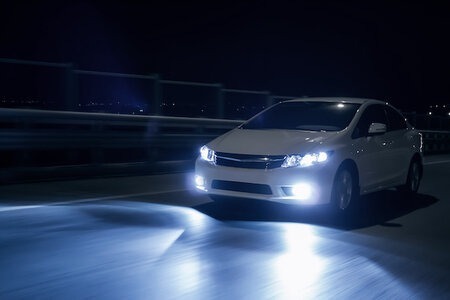Car Lights: An Essential Guide
Driving safely is a responsibility that involves understanding and adhering to various rules of the road. Amongst these regulations, the proper use of car lights plays a crucial role in ensuring road safety for both drivers and pedestrians. In the UK, where road conditions can vary greatly, understanding the purpose and correct use of car lights is essential for every driver. This article aims to provide an overview of the different types of car lights and their appropriate use on UK roads.
Headlights
These are a driver's primary tool for navigating roads in low-light conditions. They not only illuminate the road ahead but also make your vehicle visible to others. In the UK, headlights must be usually used from 30 minutes after sunset to 30 minutes before sunrise. Additionally, headlights should be used when visibility is seriously reduced, such as in heavy rain, fog, or snow.
It's crucial to adjust the beam of your headlights correctly to avoid dazzling oncoming drivers. Modern vehicles often have adjustable headlight levels, so take the time to familiarise yourself with your car's user manual.
Dipped and Full Beam
Understanding when to use dipped or low beam and full beam lights is essential. Dipped beams are usually suitable for normal nighttime driving, providing adequate visibility without dazzling other road users. However, when driving on an unlit road and when there aren’t any oncoming vehicles within 200 meters, you can switch to full beam to maximise your visibility and drive safely.
Remember to dip your headlights when approaching or following another vehicle to avoid blinding the driver. The same applies to using full beams in built-up areas, as it can be unsafe for other road users.
Daytime Running Lights (also known as DRLs)
Many modern vehicles are equipped with Daytime Running Lights (DRLs), which automatically switch on when the car engine is running. DRLs enhance the visibility of your vehicle during daylight hours, reducing the risk of accidents. However, it's important to remember that DRLs alone won’t be sufficient during low-light conditions, so always make sure to use your headlights as required by law.
Indicator Lights
Indicator lights are crucial for communicating your intentions to other road users. Use them well in advance of turning or changing lanes to allow sufficient time for those around you to react and behave appropriately. After completing the manoeuvre, remember to turn off your indicators to avoid any confusion.
Brake Lights
Brake lights inform drivers behind you that you are slowing down or coming to a stop. Ensure your brake lights are functioning correctly and use them in good time to give the drivers behind ample notice of your intentions.
Being knowledgeable about the proper use of car lights is an integral part of being a responsible driver. By following these guidelines, UK drivers can contribute to a safer and more efficient road environment for everyone. Regularly check and maintain your vehicle's lights and always be considerate of other road users by using your lights appropriately. Safe driving not only protects you but also ensures the well-being of other motorists and pedestrians on the road.
We hope our article has been informative. However, should you have any further questions, please don't hesitate to contact us.
Tags: *car_ownership *car_parts *car_service *driving_education


